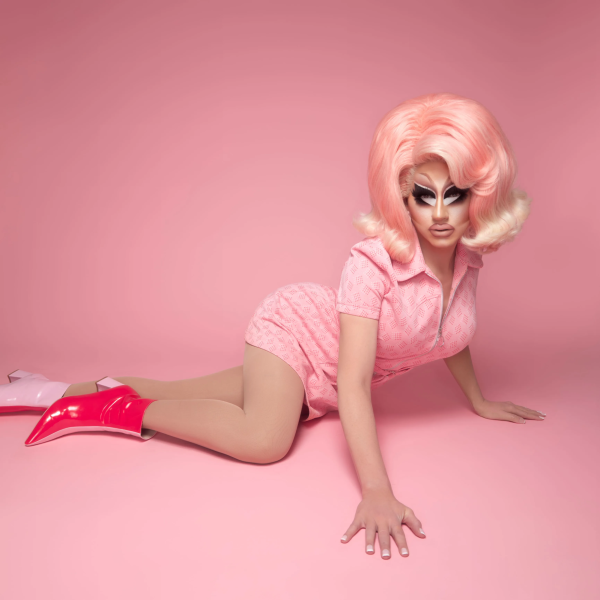A drag queen is a person, usually male, who uses drag clothing and makeup to imitate and often exaggerate female gender signifiers and roles for entertainment purposes. Historically, drag queens have generally been gay men and have been part of gay culture.
People drag for reasons ranging from self-expression to overall performance. Drag shows frequently include lip syncing, live singing, and dancing. They typically occur at LGBT pride parades, drag pageants, cabarets, carnivals, and nightclubs. Drag queens vary by type, culture and dedication, from professionals who star in films and spend much of their time in their drag personas, to people who do so only occasionally. Women who look like men and entertain by imitating them are called drag kings.
Those who occasionally perform drag may be from backgrounds other than the LGBT community. There is a long history of folk and theatrical cross-dressing involving people of all orientations. Not everyone who does drag at some point in their lives is a drag queen or drag king.
Drag reinas y reyes
Drag queens and kings
In 1971, an article in Lee Brewster’s Drag Queens magazine described a drag queen as a hyperfeminine, flamboyant, and militant “homosexual transvestite.”
Drag queens were further described as having a superior attitude and were commonly courted by heterosexual men who “would not normally enter into homosexual relationships.” While the term drag queen implied “homosexual transvestite,” the term drag had no such connotations.
In the 1970s, the drag queen was continually defined as a “homosexual transvestite.”
Drag was interpreted as changing clothes and putting on clothes of a different sex, while queen was said to refer to a homosexual man.
For much of history, drag queens were men, but in more modern times, cisgender and trans women, as well as non-binary people, also perform as drag queens.
A 2018 Psychology Today article stated that drag queens are “typically gay cisgender men (although there are many drag queens of different sexual orientations and gender identities).”
Examples of transfeminine drag queens, sometimes called trans queens,
include Monica Beverly Hillz
and mint.
Cisgender female drag queens are sometimes called fake queens or bioqueens, although critics of this practice claim that fakes carry the connotation that drag is fake, and that the use of bioqueen exclusively for cisgender women is a misnomer since the Transfeminine queens present gynomorphic traits…



